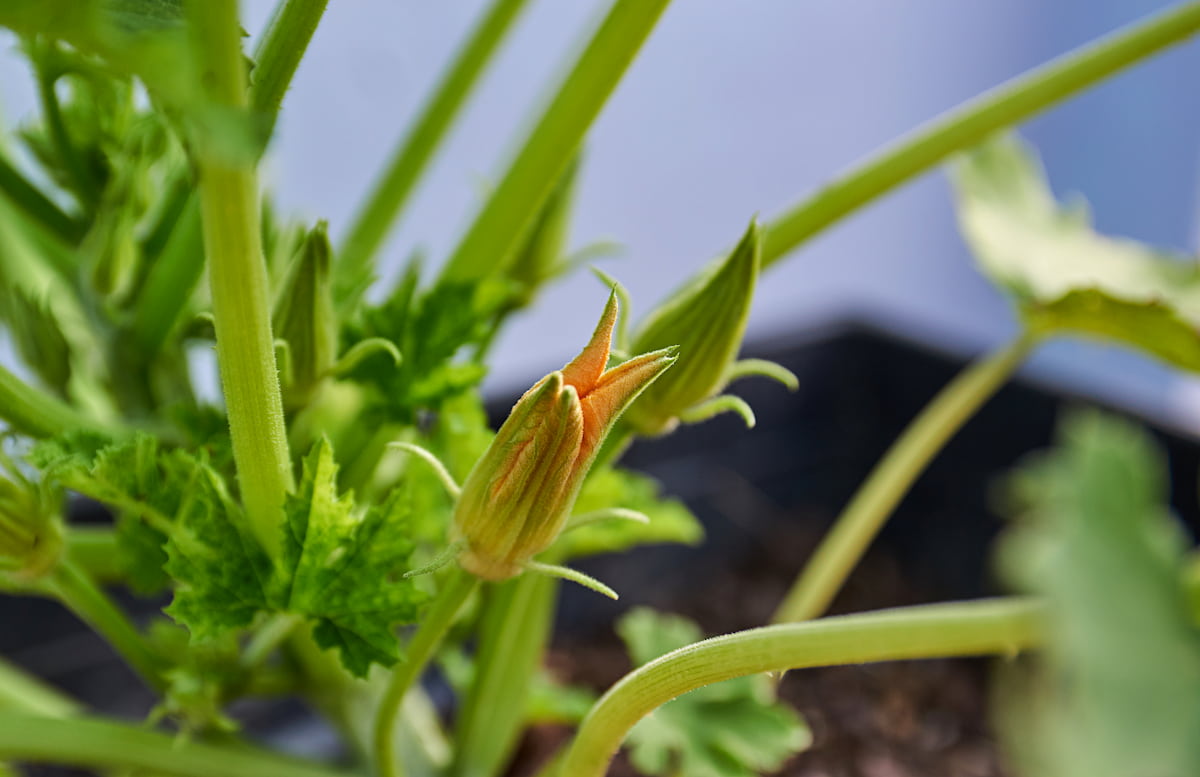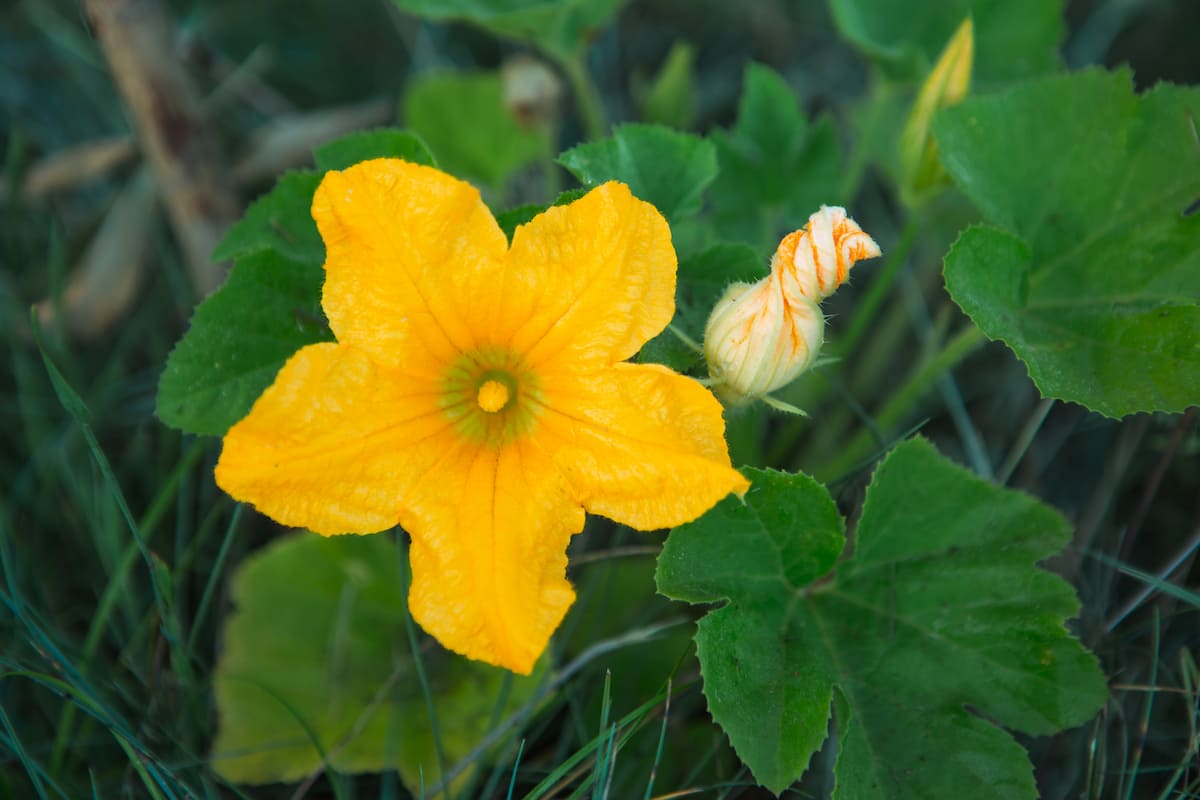Zucchini is a popular and versatile summer squash widely grown in home gardens and commercial farms. However, one common challenge gardeners face is a low yield of female flowers necessary for fruit production. The plants will produce a significant zucchini yield with an adequate number of female flowers. Fortunately, there are several methods that gardeners can use to increase female flowers in zucchini plants.

These methods include selecting the suitable variety, providing optimal growing conditions, hand pollination, using foliar sprays, avoiding stress, providing shade, companion planting, pruning, removing male flowers, and using a balanced fertilizer. By implementing these methods, gardeners can improve their zucchini yield and enjoy a bountiful harvest of this delicious and nutritious summer squash.
How to Increase Female Flowers in Zucchini
Introduction to Zucchini Cultivation
Zucchini is a summer squash widely grown due to its ease of cultivation and culinary versatility. It belongs to the Cucurbits family and is originally from Central America and Mexico. It is highly adaptable and can be grown in various climates, making it a preferred choice for home gardeners and commercial farmers.
The plant is fast-growing and needs consistent watering and warm temperatures to thrive. Zucchini fruits are highly nutritious and contain essential vitamins and minerals. Proper care and maintenance, such as adequate nutrients and pest control, can help produce a bountiful harvest of healthy and delicious zucchini.
Understand the Anatomy of Zucchini Flowers
Zucchini flowers are the plant’s reproductive organs, comprising two types: male and female. The male flower features a thin stem with a single stamen that produces pollen, while the female flower has a small fruit at its base that develops into a zucchini. The stigma in the middle of the female flower requires the transfer of pollen from the male flower for fertilization. Knowledge of zucchini flower anatomy is crucial for hand pollination and maximizing fruit production.
Best Variety of Cultivation Zucchini
Numerous varieties of zucchini are available for cultivation, each with its unique characteristics and benefits. Some of the most popular varieties include Black Beauty, Cocozelle, Costata Romanesco, Greyzini, Eight Ball, Golden Zucchini, Lebanese Zucchini, Ronde De Nice, and Yellow Straightneck. Other varieties include Astia, Defender, Dunja, Embassy, Genovese, Green Machine, Italian Ribbed, Magda, Raven, Round Zucchini, Spineless Beauty, Striato d’Italia, Tatume, Tromboncino, and Zephyr.
Optimal Growing Conditions for Zucchini
- The optimal temperature for zucchini growth is between 70-90°F.
- The soil should be well-draining and have a pH between 6.0 and 7.5.
- Zucchini plants require full sunlight for at least 6-8 hours daily and consistent watering.
- An Adequate dose of fertilizer with equal parts of NPK is applied every 2-3 weeks.
- Spacing should be 24-36 inches apart for adequate air circulation, with mulch to retain moisture and prevent weeds.
- Provide support for the plants and protect them from extreme temperatures.
- Remove damaged or diseased leaves or fruits and monitor for pests.
- Plant seeds directly in the ground after the last frost or start indoors 4-6 weeks before.
- Harvest zucchini when 6-8 inches long and tender.
- Regular harvest encourages fruit production, and plants can produce for up to 8 weeks.
- Rotate the planting location yearly and avoid planting near other Cucurbitaceae family plants.
- Plant zucchini with pollinator-attracting herbs and flowers.
- Zucchini flowers are edible and can be used in various recipes.
- Store zucchini in a cool, dry place for up to a week or freeze for longer storage.
- Zucchini is a versatile vegetable used in a variety of dishes.
In case you missed it: How to Increase Female Flowers in Cucumber: Explained in 10 Simple

Zucchini Flowering Stage
The flowering stage is crucial in zucchini cultivation when the plant consists of male and female flowers. Male flowers typically appear first and are important for pollinating the female flowers, eventually producing the zucchini fruit. It’s essential to monitor the plants during the flowering stage and hand-pollinate if necessary to ensure optimal fruit production. This stage lasts for just a few weeks, and once the flowers have been successfully pollinated, the plant will begin to produce fruit.
Factors that Affect Less Female Flowers in Zucchini
- An imbalance in soil nutrients, particularly low potassium levels, can reduce female flower production.
- Stressful growing conditions such as lack of water or extreme temperatures can cause zucchini plants to produce fewer female flowers.
- Overcrowding of plants can lead to resource competition, reducing female flower production.
- Pests and diseases such as squash vine borers, cucumber beetles, and powdery mildew can damage the plant and reduce flower production.
- Failure to remove male flowers can also impact female flower production, as the plant may focus its energy on producing pollen rather than fruit.
10 Simple Tips to Increase Female Flowers in Zucchini
- Provide adequate sunlight: Zucchini plants require at least 6-8 hours of full sunlight to encourage female flower development.
- Use the right soil: Ensure that the soil is well-draining and rich in organic matter, with a pH between 6.0 and 7.5.
- Maintain consistent watering: Water the plants deeply once or twice a week, depending on weather and soil conditions.
- Apply fertilizer: Use a balanced fertilizer with equal parts of nitrogen, phosphorus, and potassium, applied every 2-3 weeks at the base of the plant.
- Avoid over-fertilization: Too much nitrogen can lead to over-foliage growth at the expense of flower development.
- Hand pollinates: Use a small brush or cotton swab to transfer pollen from the male to the female flowers.
- Support: Zucchini plants can become heavy, so trellising or staking can help prevent stem breakage and encourage female flower development.
- Protect from extreme temperatures: Frost or heat waves can damage or stunt plant growth, reducing flower development.
- Monitor and treat for pests and diseases: Squash bugs, cucumber beetles, and powdery mildew can all impact plant health and reduce flower development.
- Plant companion plants: Herbs and flowers such as basil, marigolds, and borage can attract pollinators and improve overall plant health, leading to more female flowers.
Manual Pollination of Zucchini
To increase female flowers in zucchini, start early in the morning when pollen is available. Identify male and female flowers (males have short stems, and females have longer stems with a small zucchini at the base). Clip off a male flower and remove the petals, then gently transfer the pollen to the stigma in the middle of the female flower. Alternatively, leave the male flower in place and use a cotton swab or paintbrush for pollen transfer. Repeat this process on multiple zucchini plants. This hand-pollination technique can help increase fruit production and ensure a more abundant harvest.
In case you missed it: How to Increase Female Flowers in Pumpkin: Explained in 10 Simple Steps

Conclusion
To increase female flowers in zucchini, simple steps such as locating freshly opened male and female flowers, transferring pollen from a male flower to the female flower’s stigma, and providing proper watering, fertilization, and spacing are necessary. By following these tips, gardeners can ensure healthy zucchini growth and increased fruit production, resulting in a bountiful harvest throughout the growing season.
- Feed Your Flock for Less: Top 10 Tips to Save on Chicken Feed
- Ultimate Guide to Ossabaw Island Hog: Breeding, Raising, Diet, and Care
- Hatching Answers: The Top 10 Reasons Your Chickens Aren’t Laying Eggs
- Eggs and Economics: Breaking Down the Cost of Raising Backyard Chickens
- Defend Your Greens: Proven Methods to Keep Iguanas Out of Your Garden
- Ultimate Guide to Cinnamon Queen Chicken: A Comprehensive Guide for Beginners
- Ultimate Guide to California Tan Chicken: Breeding, Raising, Diet, Egg-Production and Care
- Ultimate Guide to Marsh Daisy Chicken: Breeding, Raising, Diet, and Care
- 10 Types of Chicken Farming Businesses You Can Start for Profits